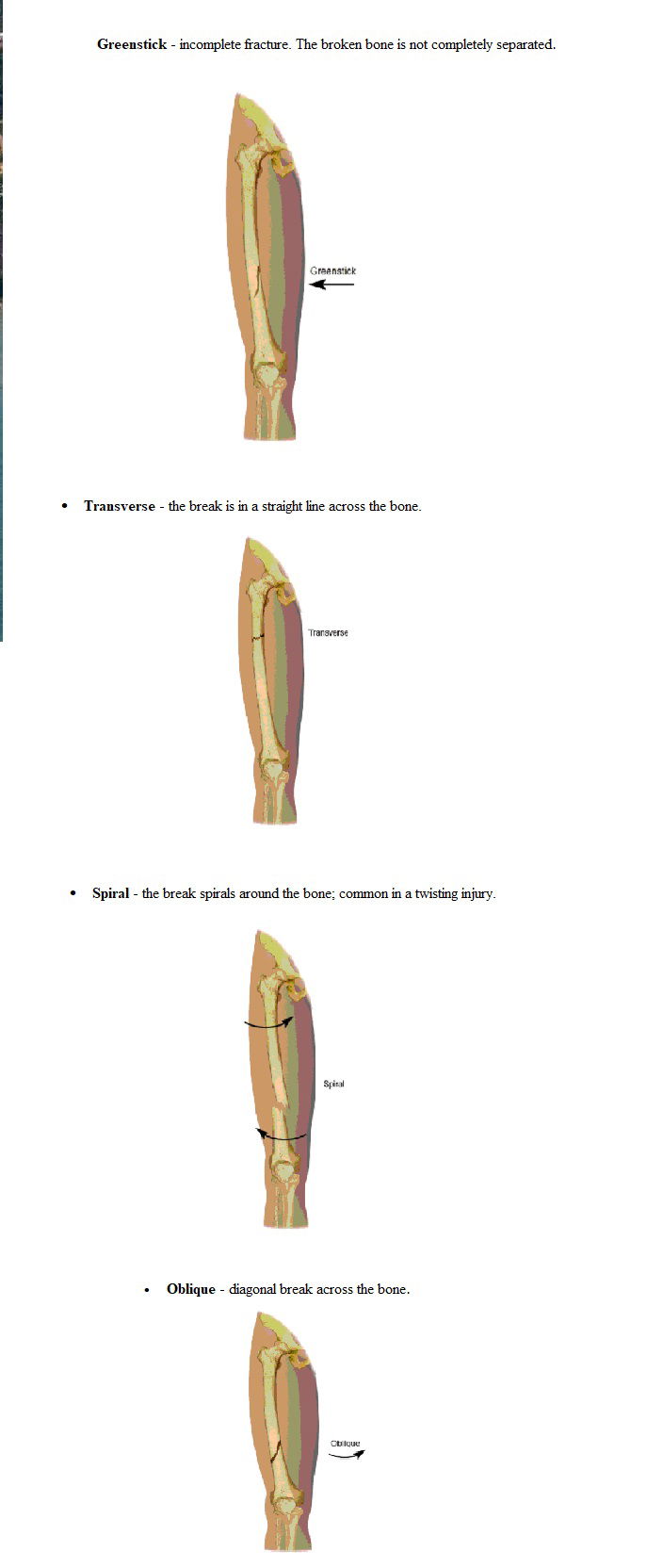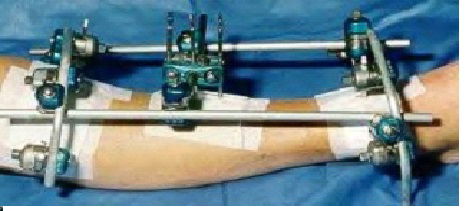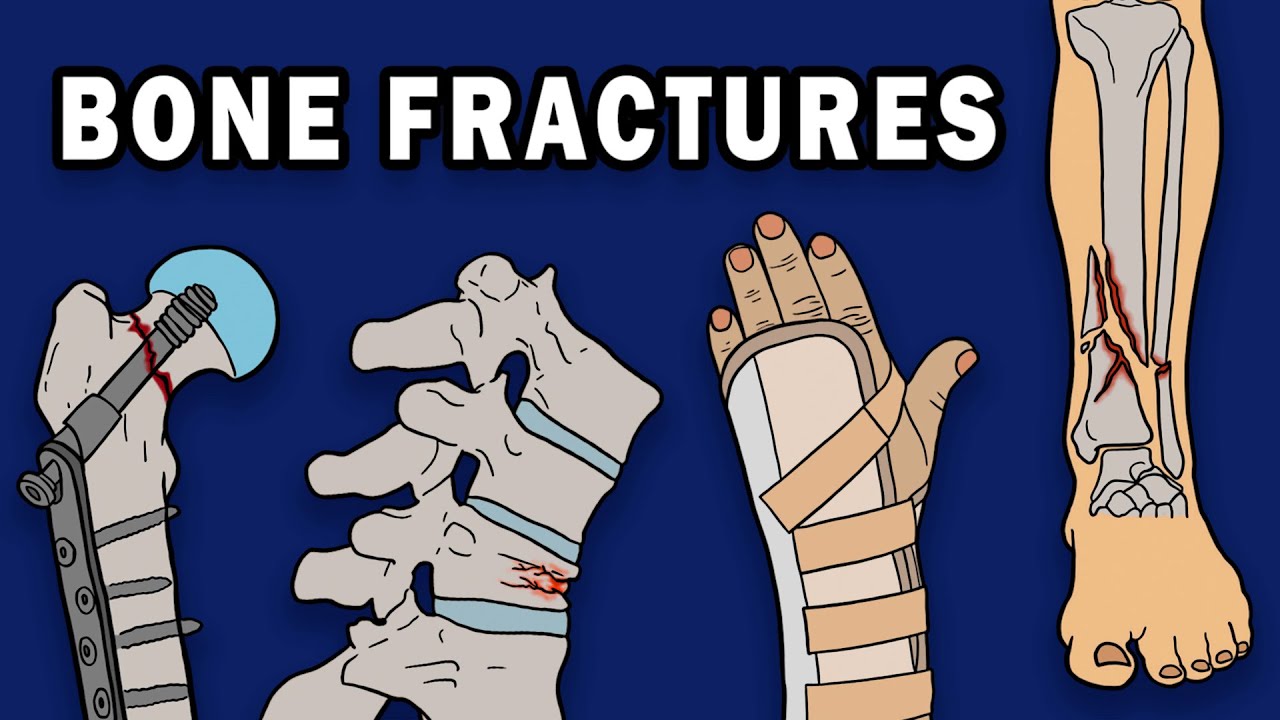BONES
Bone is a connective tissue so it is made up of matrix, fibers, and cells.Matrix: contains the abundant mineral salts, tricalcium phosphate (hydroxyapatite) and calcium carbonate. It also contains small amount of magnesium hydroxide, and sulphate.These harden the bone.Fibers: Collagen, it provides tensile strength to the bone. Without it the bone would be very brittle.
A fracture is defined as a disruption in the integrity of a living bone, involving injury to the bone marrow, periosteum, and adjacent soft tissuesClassification of fractures:
fracture classification takes into account the following criteria
⦁ Site of the injury. (Generally the site is described as proximal, middle,or distal portion of the bone)
⦁ Extent of the injury: complete or incomplete.
⦁ direction of abnormality (transverse, oblique, spiral,)
⦁ relationship of fracture fragments to each other(displaced,nondisplaced,angulated,twisted,rotated,or overriding)
⦁ Relationship of fracture fragments to the environment (open-compound, or closed-simple).
⦁ Greenstick - incomplete fracture. The broken bone is not completely separated.

Signs and symptoms
⦁ pain in the injured area
⦁ swelling in the injured area
⦁ obvious deformity in the injured area
⦁ difficulty using or moving the injured area in a normal manner
⦁ warmth, bruising, or redness in the injured area
Diagnostic procedures
⦁ X-rays - a diagnostic test which uses invisible electromagnetic energy beams to produce images of internal tissues, bones, and organs onto film.
⦁ Magnetic resonance imaging (MRI) - a diagnostic procedure that uses a combination of large magnets, radiofrequencies, and a computer to produce detailed images of organs and structures within the body. This test is done to rule out any associated abnormalities of the spinal cord and nerves.
⦁ Computed tomography scan (Also called a CT or CAT scan.) - A diagnostic imaging procedure that uses a combination of x-rays and computer technology to produce cross-sectional images (often called slices), both horizontally and vertically, of the body. A CT scan shows detailed images of any part of the body, including the bones, muscles, fat, and organs. CT scans are more detailed than general x-rays

WATCH THIS VIDEO:

